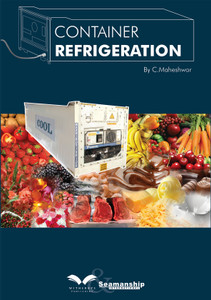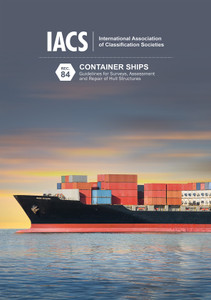
The International Convention for Safe Containers, 1972 (CSC 1972) has two goals: to maintain a high level of safety of human life in the transport and handling of containers by providing acceptable test procedures and related strength requirements and to provide uniform international safety regulations, equally applicable to all modes of surface transport, thereby avoiding the proliferation of divergent national regulations.
The amendments to CSC 1972 adopted by resolution MSC.355(92) entered into force on 1st July 2014 and include: new definitions at the beginning of Annexes I and II, along with consequential amendments to ensure uniform usage of terminology throughout CSC 1972; amendments to align all physical dimensions and units to the SI system; the introduction of a transitional period for marking containers with restricted stacking capacity, as required under the relevant standard; and the inclusion in Annex III of the list of deficiencies which do not require an immediate out-of-service decision by the control officer but do require additional safety measures to enable safe ongoing transport.
Foreword
The rapid increase since the 1950s in the use of freight containers for the consignment of goods by sea and the development of specialized container ships, prompted the International Maritime Organization (IMO), in 1967, to study the safety of containerization in marine transport.
In 1972, a conference jointly convened by the United Nations and IMO was held to consider a draft convention prepared by IMO in cooperation with the Economic Commission for Europe.
The 1972 Convention for Safe Containers (CSC 1972) adopted by that conference has two goals: one is to maintain a high level of safety of human life in the transport and handling of containers by providing generally acceptable test procedures and related strength requirements which have proven adequate over the years; the other is to facilitate the international transport of containers by providing uniform international safety regulations, equally applicable to all modes of surface transport. In this way, proliferation of divergent national safety regulations can be avoided.
The requirements of CSC 1972 apply to the great majority of freight containers used internationally, except those designed specifically for carriage by air. As it was not intended that all container, van or reusable packing boxes should be affected, the scope of the Convention is limited to containers of a prescribed minimum size having corner fittings.
CSC 1972 sets out procedures whereby containers used in international transport must be approved for safety by the Administration of a Contracting Party or by an organization acting on its behalf. The Administration, or an organization authorized by it, will then authorize the manufacturer to affix a Safety Approval Plate containing the relevant technical data onto approved containers.
The approval evidenced by the Safety Approval Plate granted by one Contracting Party should be recognized by other Contracting Parties. This principle of reciprocal acceptance of approved containers constitutes the cornerstone of the Convention. Once approved and plated, containers are expected to move in international transport with the minimum of safety control formalities. The subsequent maintenance of a container approved for safety is the responsibility of the owner, who is required to have the container periodically examined.
The technical annexes to CSC 1972 specifically require that the container should be subjected to various tests, which represent a combination of safety requirements of both the inland and maritime modes of transport. Flexibility is incorporated into the Convention by the provision of simplified amendment procedures for the technical annexes.
CSC 1972 was amended in 1981 to provide transitional arrangements for plating of existing containers (which had to be completed by 1 January 1985) and for the marking of the date of the container’s next examination by 1 January 1987. It was again amended in 1983 to extend the interval between re-examinations to 30 months and to permit a choice of container re-examination procedures between the original periodic examination scheme or a new approved continuous examination programme.
In 1991, amendments were adopted to annex I to prevent containers being marked with misleading maximum gross weight information, to ensure removal of the Safety Approval Plate when void for any reason and to provide for the approval of modified containers. Amendments to annex II clarified certain test provisions. The 1991 amendments entered into force on 1 January 1993.
In 1993, amendments to the Convention were adopted by resolution A.737(18) but have not yet entered into force. Amendments to the Convention adopted by resolution MSC.310(88) entered into force on 1 January 2012 and include new specifications regarding Safety Approval Plates, describing the validity of, and elements to be included in, approved examination programmes; a new test for containers being approved for operation with one door removed; and the addition of a new annex III on control and verification. Annex III provides specific control measures for authorized officers to assess the integrity of structurally sensitive components of containers and to decide whether a container is safe to continue in transportation or whether it should be stopped until remedial action has been taken.
The amendments to the Convention adopted by resolution MSC.355(92) enter into force on 1 July 2014 and include new definitions at the beginning of annexes I and II, along with consequential amendments to ensure uniform usage of terminology throughout CSC 1972; amendments to align all physical dimensions and units to the SI system; the introduction of a transitional period for marking containers with restricted stacking capacity; and the inclusion in annex III of the list of deficiencies which do not require an immediate out-of-service decision by the control officer but do require additional safety measures to enable safe ongoing transport. These new amendments incorporate many elements of the 1993 amendments. However, as they are not identical to the 1993 amendments and to avoid any confusion, this publication does not include resolution A.737(18).
The supplement to this publication, containing revised and consolidated recommendations on harmonized interpretation and implementation of CSC 1972, and guidelines for development of an approved continuous examination programme, does not constitute any part of the Convention.
International Convention for Safe Containers, 1972
Annex I Regulations for the testing, inspection, approval and maintenance of containers
Chapter I Regulations common to all systems of approval
Chapter II Regulations for approval of new containers by design type.
Chapter III Regulations for approval of new containers by individual approval.
Chapter IV Regulations for approval of existing containers and new containers not approved at time of manufacture
Chapter V Regulations for approval of modified containers
Appendix
Annex II Structural safety requirements and tests
Annex III Control and verification
Supplement
CSC.1/Circ.138/Rev.1
Revised recommendations on harmonized interpretation and implementation of the International Convention for Safe Containers, 1972, as amended
CSC.1/Circ.143
Guidelines for development of an approved continuous examination programme (ACEP).
A??s a specialized agency of the United Nations, IMO is the global standard-setting authority for the safety, security and environmental performance of international shipping. Its main role is to create a regulatory framework for the shipping industry that is fair and effective, universally adopted and universally implemented.
In other words, its role is to create a level playing-field so that ship operators cannot address their financial issues by simply cutting corners and compromising on safety, security and environmental performance. This approach also encourages innovation and efficiency.
Shipping is a truly international industry, and it can only operate effectively if the regulations and standards are themselves agreed, adopted and implemented on an international basis. And IMO is the forum at which this process takes place.
- Number of Pages:
- 86
- ISBN:
- 9789280115932
- Published Date:
- May 2014
- Book Height:
- 250 mm
- Book Width:
- 210 mm
- Author:
International Maritime Organization
- Preview:
- Yes
- Binding Format:
- Paperback
- Publication Date:
- May 2014





